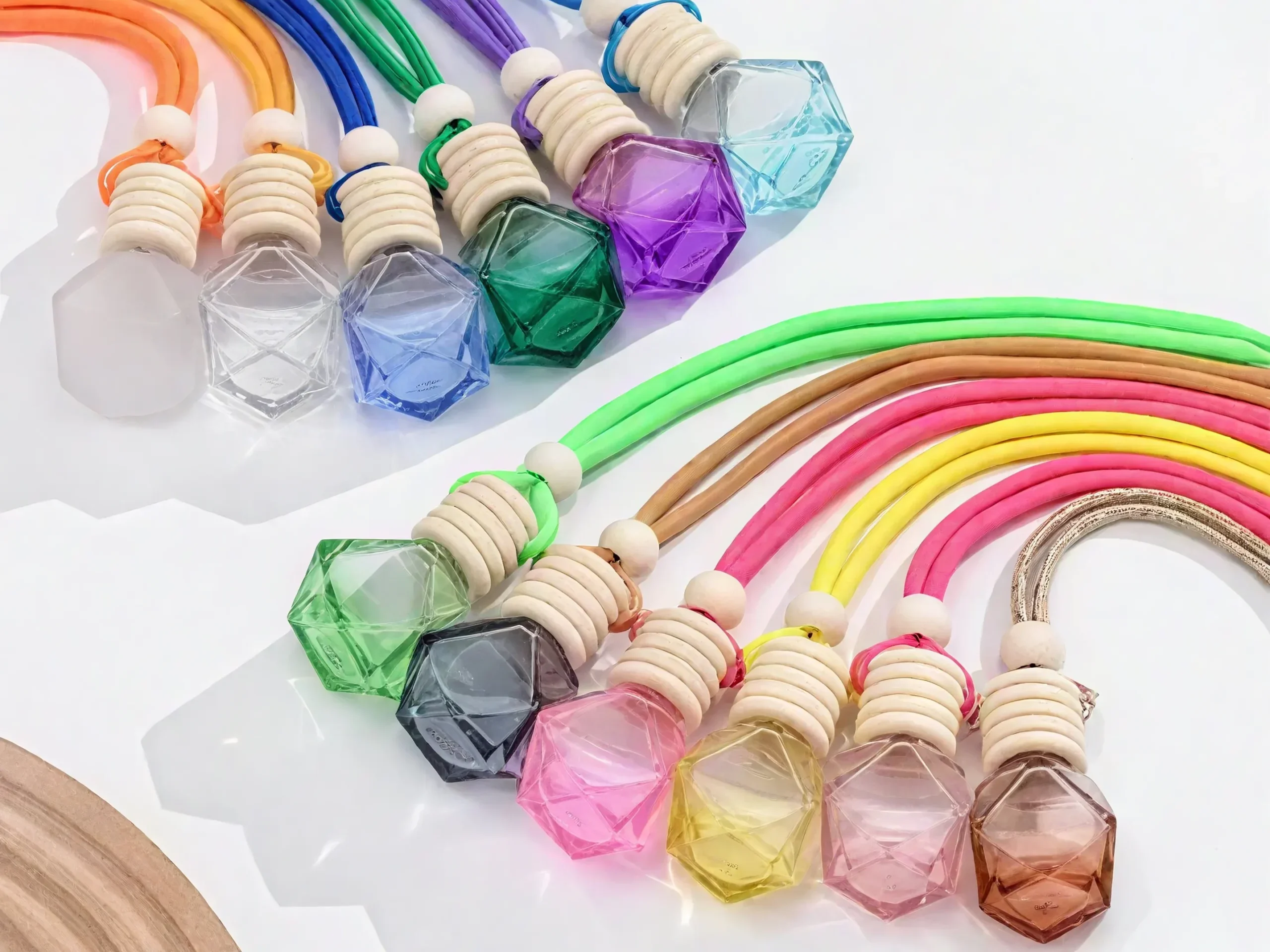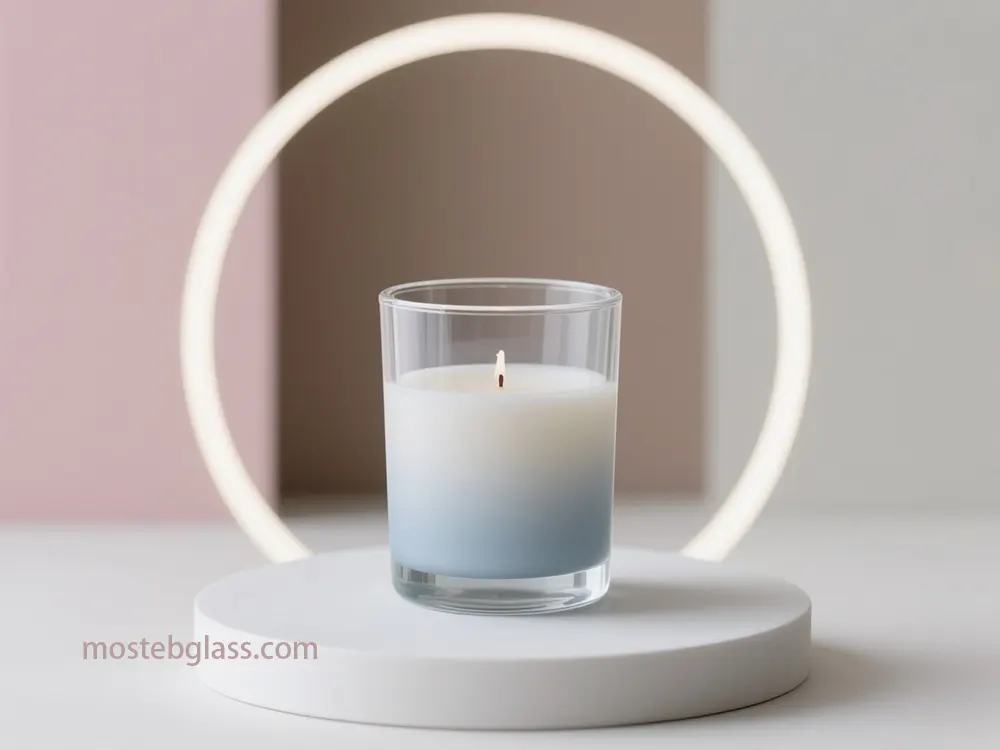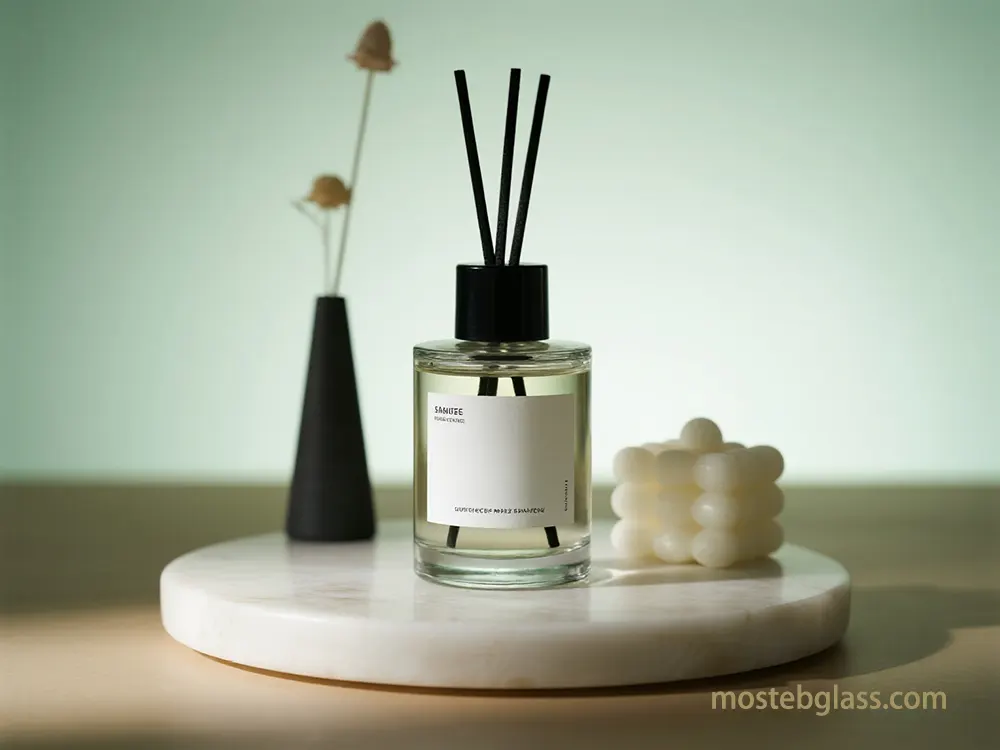Introduction
Strategic sourcing of bulk glass candle jars is a critical determinant of success for businesses in the candle industry, ranging from burgeoning startups to established manufacturers. The intricate global supply chain for glass products, coupled with evolving market demands and regulatory landscapes, presents numerous opportunities for efficiency but also significant pitfalls. This report aims to provide a comprehensive guide to identifying and preventing common mistakes in the procurement process, ensuring a resilient, cost-effective, and high-quality supply of glass candle jars. By understanding the nuances of supplier relationships, quality assurance, logistics, financial management, regulatory compliance, and risk mitigation, companies can transform potential vulnerabilities into competitive advantages.
Foundational Understanding: Tailoring Sourcing Strategies to Your Business Context
Effective sourcing begins with a clear understanding of your specific business context. Whether you operate as a large-scale manufacturer requiring consistent, high-volume supply or a nimble startup with fluctuating needs, your strategy must be tailored. Key considerations include your projected volume needs, target geographic regions for sales, and precise jar specifications (e.g., glass clarity, heat resistance, neck finish).
For instance, high-volume procurement often benefits from strategic sourcing models that balance cost, lead time, quality, and resilience, utilizing decision frameworks employed by leading manufacturers. The choice between domestic, international, or hybrid sourcing strategies is heavily influenced by economic volatility, tariffs, and the desire for supply chain visibility. For example, the unpredictable U.S. tariff environment, with doubled tariffs on steel and aluminum in June 2025, underscores the need for adaptable strategies and transparent supply chain costs to safeguard production stability.

1. Mistake 1: Inadequate Supplier Vetting and Relationship Management
A superficial approach to supplier evaluation is a common and costly mistake. Comprehensive due diligence extends beyond basic certifications to include in-depth assessments of a supplier’s capabilities, ethical practices, and financial stability. Advanced supplier audit protocols are essential, encompassing Environmental, Health, and Safety (EHS) compliance, glass production line audits, and adherence to ISO 9001 quality management systems. ESG (Environmental, Social, and Governance) supplier audits are increasingly vital, evaluating performance across these dimensions to ensure alignment with corporate values and regulatory compliance. Financial risk assessment, utilizing tools that provide automated risk profiling and real-time alerts for credit downgrades, is crucial to avoid disruptions from financially unstable partners. Red flags such as non-compliance with legal requirements, cybersecurity vulnerabilities, or hidden ethical sourcing risks (e.g., deforestation, unfair labor) must be identified and addressed proactively. Leveraging third-party audit services and supply chain transparency tools like EcoVadis or TraceX can provide objective assessments and verifiable data, fostering robust, long-term supplier relationships built on trust and shared values.
2. Mistake 2: Neglecting Comprehensive Quality Assurance and Specification Definition
Failing to precisely define jar specifications and establish rigorous quality control (QC) protocols can lead to significant product failures and reputational damage. Common defects in glass candle jars include finish defects (split, chipped, unfilled), sidewall/body defects (bird swing, blisters, deformation, thin walls), and base defects (deformed bottom, rocker bottom). Critical defects like stuck plugs or overpress can severely impact usability and safety.To prevent these, comprehensive QC measures are indispensable. These include visual inspection for surface flaws, dimensional accuracy checks using calipers, and capacity verification.Crucially, thermal resistance tests are vital for candle jars, involving exposure to rapid temperature changes (e.g., immersing in 71℃ water then 21℃ water) to ensure they withstand the heat generated by burning candles without cracking or deforming.
Industry standards such as ASTM F2179 (Candle Safety Standard) and ASTM C147 (Internal Pressure Strength) are paramount for ensuring product safety and performance.Automated Optical Inspection (AOI) systems, equipped with cameras and advanced imaging technology, can detect subtle defects that human eyes might miss, improving efficiency and accuracy.Incoming Quality Control (IQC) best practices involve establishing clear defect criteria with suppliers (e.g., maximum bubble size ≤1mm), ensuring compliance with relevant regulations (e.g., FDA for food-contact safety, EU RoHS for hazardous substances), and maintaining thorough documentation.The Acceptable Quality Limit (AQL) framework, typically based on ISO 2859-1 and ANSI/ASQ Z1.4-2003, defines the maximum acceptable number of defective items for critical (AQL 0), major (AQL 0.65-1.5), and minor (AQL 6.5) defects, guiding sampling plans and ensuring consistent quality.
3. Mistake 3: Underestimating Logistics, Shipping, and Geographic Complexities
Logistics and transport are frequently underestimated cost and chance facilities. Damage to fragile glass products in the course of worldwide freight is a great concern. Effective mitigation techniques contain multi-layered procedures to packaging, loading, and carrier selection.
- Packaging and Dunnage: Custom-in shape packaging, frequently utilizing automated cutting technology, minimizes motion and enhances protection.Custom molded packaging and inflatable packaging provide superior cushioning and shock absorption, at the same time as biodegradable foam inserts and green packaging peanuts provide sustainable alternatives.Film packaging, which clings tightly to goods, and bolstered corrugated cardboard offer additional layers of safety.Double-boxing, where a smaller padded field is nested within a bigger one, gives an extra layer of effect resistance.Dunnage, together with air pillows, foam inserts, and corrugated inserts, is essential for filling empty spaces and immobilizing products within shipping boxes 7072. For Mosteb, investing in bespoke packaging solutions that combine these superior substances can significantly lessen breakage fees and beautify purchaser delight.
- Container Loading and Securing: Proper shipment securing with straps, chains, or braces is important to save you transferring.Heavy gadgets need to be placed at the lowest and evenly allotted for stability.Vertical stacking, nesting strategies, and modular storage gadgets maximize space usage.Load planning software program can help in optimizing box loading, thinking about weight distribution and fragility.Tight block stowing and interlocking styles enhance stability, while specialized lashing and bracing strategies immobilize cargo.Open top boxes (OT) are useful for over-peak cargo, allowing top-loading and minimizing harm risk.
- Carrier Selection and Handling: Choosing freight providers with specialized device, along with air-ride suspension structures and weather-controlled cubicles, can mitigate vibrations and temperature fluctuations.Carriers with skilled personnel experienced in handling fragile gadgets are important.Full Truckload (FTL) shipping is regularly most appropriate for glass, because it reduces handling in comparison to Less Than Truckload (LTL) shipments.White glove services offer specialized managing, custom crating, and internal transport for excessive-cost or huge items.Route planning have to prioritize paths that reduce transit time and ability dangers.
- Impact of Vibration and Shock: Vibration at some stage in transport can cause stress points and micro-cracks in glass, leading to breakage.Resonant frequency vibration excitation, where vibrations align with the product’s natural frequency, poses the highest risk.Packaging layout have to attenuate these frequencies and cushioning substances should lessen top G levels.Every mode of delivery introduces vibrations which could compromise package balance, leading to element shifting, seal failure, and structural fatigue.
- Incoterms and Insurance: Incoterms outline responsibilities for shipping, prices, and danger switch, but not ownership.While Incoterms like CIF (Cost, Insurance, and Freight) include insurance, the insurance may be inadequate, necessitating additional client-purchased insurance.Prompt reporting of loss or damage is crucial for coverage claims, as delays can result in denial.Essential declare files consist of the coverage policy, invoice of lading, invoice, and packing list.The vendor is liable for ensuring the box is cargo-worthy and nicely sealed.

4. Mistake 4: Poor Contract Negotiation and Financial Oversight
Poor contract negotiation and inadequate financial oversight can erode profitability and introduce unexpected risks.
- Incoterms Negotiation: Understanding Incoterms is paramount. For instance, EXW (Ex Works) places nearly all duty and risk on the purchaser from the vendor’s factory, at the same time as DDP (Delivered Duty Paid) places it almost entirely on the seller, masking import clearance and responsibilities.FOB (Free on Board) transfers risk whilst goods are on board the vessel, generally used for sea shipping.A common mistake is misinterpreting Incoterms, incorrectly assigning responsibilities, or failing to specify the precise region or port of shipping.For containerized shipment, using FCA (Free Carrier), CPT (Carriage Paid To), or CIP (Carriage and Insurance Paid To) is regularly greater appropriate than FOB or CIF.Less than forty% of importers negotiate their favored Incoterms, highlighting a big neglected opportunity.
- Payment Terms: Negotiating favorable price phrases is crucial for coins flow control. Options include decrease strengthen payments, Letters of Credit (LC) that make certain price upon meeting conditions, longer net terms (Net 30, 60, 90), and price in installments (e.G., 30% upfront, 70% upon shipping).Building strong provider relationships can lead to greater bendy terms.Written contracts need to truely specify charge phrases, cut-off dates, and penalties.Staggered bills tied to milestones and the use of escrow services for brand spanking new providers can mitigate threat.Offering incentives like larger destiny orders or early payment discounts can support your negotiating role.
- Currency Risk Management: Fluctuations in alternate rates can significantly effect charges. Strategies to mitigate currency danger encompass hedging with financial gadgets like forward contracts or options, diversifying purchases across distinct currencies, and negotiating pricing agreements with providers that consist of exchange fee adjustment clauses.Regular tracking of marketplace trends and economic indicators is important.Understanding who bears the foreign money danger (purchaser or supplier) and such as clauses in contracts to shift this risk are critical.Natural hedging, with the aid of matching sales and charges in the equal foreign money, can also offset publicity.
- Total Cost of Ownership (TCO): Beyond the unit rate, expertise the Total Cost of Ownership (TCO) is crucial. TCO consists of acquisition, upkeep, operation, repair, and use of packaging, at the side of related equipment and substances.Key components encompass transportation expenses, operational charges (e.G., managing gadget, payroll), and system charges (buy fee, lifespan, preservation, downtime).Hidden fees, consisting of overhead, balance sheet affects, and dangers, have to be accounted for.Tariffs also appreciably impact TCO.Calculating the cost in keeping with unit (e.G., € per 1000 containers) and considering capital expenses (CAPEX) like tooling and operational expenditures (OPEX) like strength intake offers a holistic economic view.
5. Mistake 5: Overlooking Regulatory Compliance and Certification Requirements
Failure to stick to enterprise-precise regulations and protection requirements can cause extreme consequences, product recollects, and reputational harm.
5.1. Key Regulations and Standards
- California Proposition: For jars offered in California, warning labels can be required if they include chemicals recognised to reason most cancers or reproductive damage, necessitating chemical composition evaluation [Implied from learnings].
- EU REACH Regulations: Imports into the EU have to comply with REACH, restricting risky substances (SVHCs) [Implied from learnings].
- EU Packaging and Packaging Waste Directive (94/sixty two/EC): Sets requirements for packaging, consisting of heavy metallic content and recyclability [Implied from learnings].
- UKCA Marking: Post-Brexit, merchandise sold within the UK require UKCA marking, similar to EU CE marking, signifying compliance with UK safety, fitness, and environmental standards [Implied from learnings].
- ASTM Standards: Voluntary technical requirements like ASTM F2417 (Fire Safety for Candles), ASTM F2179 (Candle Safety Standard), ASTM C148 (Annealing Quality), and ASTM C149 (Thermal Shock Resistance) are important for glass candle jars. ASTM C225 and C1036 additionally observe to chemical resistance and flat glass best, respectively.
- CPSIA (Consumer Product Safety Improvement Act): If jars are advertised for youngsters, CPSIA mandates trying out for lead and different risks [Implied from learnings].
- ISO Certifications: ISO 9001 (Quality Management), ISO 14001 (Environmental Management), ISO 50001 (Energy Management), and ISO 45001 (Occupational Health and Safety) exhibit a manufacturer’s commitment to quality, environmental obligation, and protection.
- Testing and Certification: Compliance frequently requires specific checking out, including chemical evaluation for heavy metals (lead, cadmium, mercury, hexavalent chromium) and SVHCs, thermal shock testing, and probably drop trying out [Implied from learnings]. Reputable third-birthday party certification bodies like SGS, Intertek, and Bureau Veritas offer those offerings [Implied from learnings]. The layout and composition of the glass, such as any decorations (paints, coatings, labels), should also follow chemical and protection rules and facilitate recyclability [Implied from learnings].
- Extended Producer Responsibility (EPR): EPR schemes, conventional in the EU, maintain manufacturers chargeable for the end-of-existence control of their packaging. This method importers of glass candle jars may need to take part in or make a contribution to country wide recycling packages, impacting the overall cost and operational requirements [Implied from learnings].
6. Mistake 6: Insufficient Risk Mitigation and Contingency Planning
Failing to put together for deliver chain disruptions, satisfactory deviations, geopolitical instability, or provider disasters is a essential oversight. A sturdy chance assessment framework is essential.
6.1. Risk Assessment Frameworks
A new risk evaluation model integrates the Risk Matrix and IVIF-TOPSIS (Interval-Valued Intuitionistic Fuzzy – Technique for Order Preferences by using Similarity to an Ideal Solution) method to prioritize hazard factors in glass production, thinking about technical, economic, and environmental demanding situations.Comprehensive danger evaluation includes analyzing internal and outside network dangers, such as suppliers with ESG compliance issues, market volatility, and provider stability.The glass enterprise need to circulate past traditional threat control to incorporate power volatility, ESG compliance, and decarbonization necessities into its Integrated Risk Management (IRM).
6.2. Supply Chain Visibility and Diversification
Maximizing supply chain visibility is critical for mitigating disruptions.Digital platforms like BISS.ID provide cloud-based totally IoT solutions for facts trade, product labeling, rack management, and logistics system mapping, with GPS trackers for real-time records switch.Blockchain technology complements transparency by means of creating a decentralized, immutable ledger for all transactions, monitoring from raw material sourcing to very last product shipping, and making sourcing costs obvious.Tools like Sourcemap provide continuous, verifiable deliver chain mapping right down to raw fabric beginning.
6.3. Hybrid Supply Strategies for Resilience and Control
Diversifying supplier techniques and improving stock tiers enhance resilience.A hybrid deliver chain method, combining lean traits for strong demand with agility for unpredictable markets, mitigates risks and adapts to customer needs.The trend toward reshoring manufacturing and sourcing lower back to North America, as indicated by a 2020 Thomas survey where 69% of manufacturing businesses expressed this chance, gives benefits like better lead times and more control.
6.4. Scenario Planning and Contingency
Scenario planning identifies key issues affecting a enterprise through potential monetary, technological, criminal, and political shifts, permitting education for sudden occasions.This includes reading the surroundings (e.G., using PESTLE), figuring out excessive-impact factors, creating multiple scenarios, and trying out existing techniques towards them.Flexible backup structures and twin-goal stochastic optimization models can notably reduce the hazard of dynamic disruptions. A hybrid version with operations or inventory in more than one places minimizes hazard in any single location.

7. Leveraging Technology and Innovation for Proactive Sourcing
Emerging technology offer effective equipment to preempt commonplace sourcing mistakes and optimize the procurement system for bulk glass candle jars.
7.1. AI and Machine Learning (ML)
Smart procurement integrates AI and ML to automate processes, beautify choice-making, and deliver strategic insights, making the complete procurement lifecycle extra proactive and statistics-pushed.AI can automate spend categorization, supplying deeper insights into spending patterns and enabling real-time price range control.AI-driven packaging optimization can pick appropriate substances and decrease excess, potentially leading to tremendous value savings and waste discount.
7.2. Digital Twins
Digital twins, digital representations of actual-world entities, are increasingly more used inside the glass enterprise to monitor the entire production process, predict problems, and optimize operations.They integrate facts from sensors with physics-primarily based models, permitting digital commissioning, troubleshooting, and predictive upkeep to reduce unplanned downtime and growth reliability.
7.3. Internet of Things (IoT) and AIoT
IoT devices (sensors, GPS trackers, RFID tags) offer actual-time records on area, temperature, humidity, and vibration, presenting stop-to-give up deliver chain visibility.This is mainly precious for fragile goods like glass jars, triggering alerts for instant motion if situations deviate.AIoT, which integrates AI talents into IoT infrastructure, permits smart gadgets to perform superior analytics and make informed selections based totally on accrued records, further enhancing operational performance.
7.4. Robotic Process Automation (RPA)
RPA automates repetitive, rule-based obligations in procurement, lowering guide workloads, improving information accuracy, and streamlining every day operations.RPA can automate duties like monitoring stock tiers and creating buy orders for reordering, making sure a constant production manner.It can also automate three-way matching by way of comparing buy requests, supplier invoices, and delivery receipts.RPA can reduce costs via 35-65% for onshore operations.
7.5. Predictive Analytics and Software Solutions
Predictive analytics leverages data analysis, statistical techniques, and machine learning algorithms to gain insights into future trends, enhancing decision-making. AI-driven predictive analytics can be used for supplier risk management, performance tracking, and identifying potential risks. Some procurement analytics software integrates data from disparate systems to provide comprehensive insights into spend, supplier performance, and policy compliance. Mosteb can leverage these platforms to gain a competitive advantage, transforming raw statistics into actionable insights for strategic sourcing. Data optimization is crucial to the success of these AI applications and requires careful cleansing and integration.
8.Conclusion: Building a Resilient and Efficient Sourcing Strategy
Avoiding not unusual errors in sourcing bulk glass candle jars calls for a multi-faceted, strategic, and constantly evolving technique. From meticulous supplier vetting and strong pleasant assurance protocols to latest logistics control, astute financial oversight, and unwavering regulatory compliance, each step needs professional hobby. Proactive chance mitigation, supported via advanced frameworks and situation planning, is crucial for navigating an unpredictable global panorama. Furthermore, embracing developing era including AI, digital twins, IoT, and RPA can revolutionize procurement, reworking it from a reactive feature right into a proactive, facts-pushed strategic gain. By integrating the ones exceptional practices and leveraging progressive gear, agencies can construct a resilient and inexperienced sourcing technique that guarantees a steady deliver of fantastic glass candle jars, ultimately helping sustainable growth and marketplace management.














